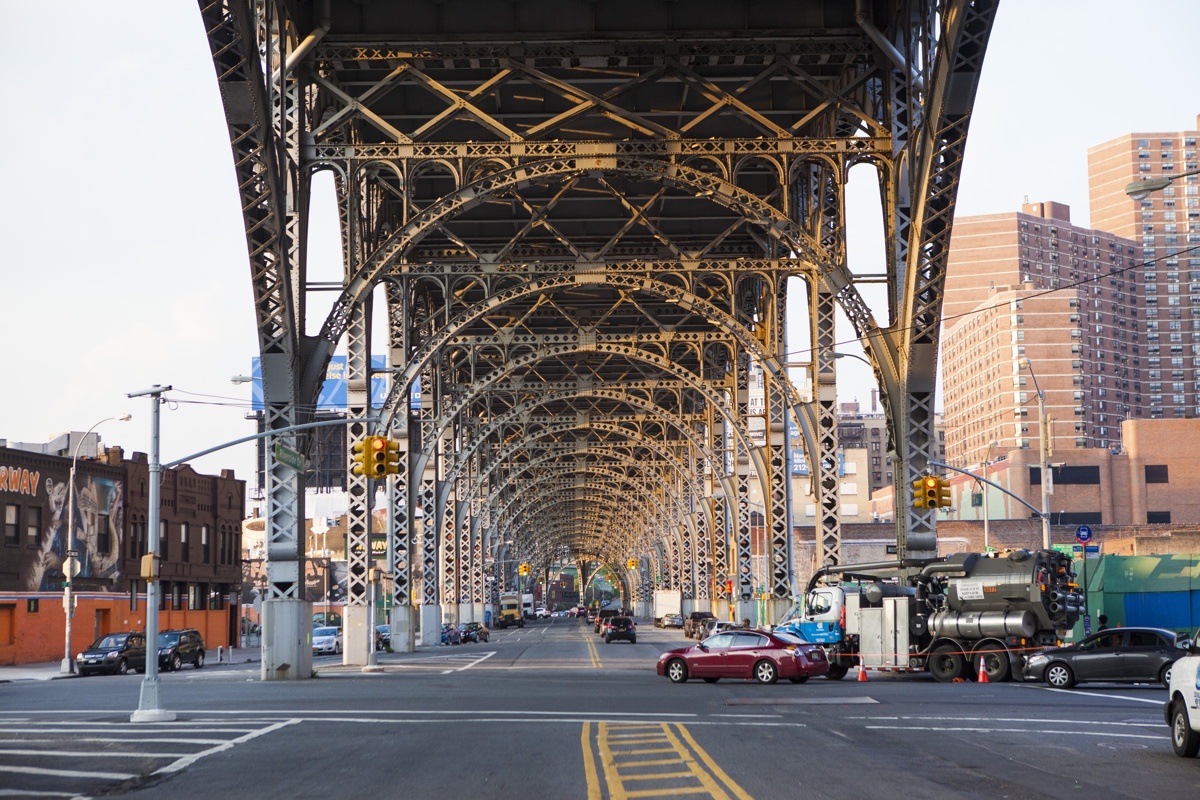The urban heat island effect in NYC

In New York City and across the country, more people die from extreme heat than from all other natural disasters combined. To understand how to keep New Yorkers safe from extreme heat, we studied neighborhood factors that affect temperature, and found that grass, shrubs, and trees can play a major role. Let’s take a look.
At 6.00 PM on June 30, 2018, the air temperature at the LaGuardia Airport Weather Station was 89° Fahrenheit (F). At the same time, the air temperature on a block in East Harlem (below left) was nearly 5° hotter than at the Weather Station, and the temperature on a block in Bed-Stuy (below right) was 3.5° hotter.
Manhattan: 93.9° F
Brooklyn: 92.5° F
LaGuardia Airport is an open space without many structures surrounding it. It doesn't trap heat the way other places in the city do, so we often use it as a reference temperature. It is almost always cooler than other parts of NYC, where building boilers and vehicle engines generate heat, manufactured surfaces like roofs and roads absorb heat, and there’s less vegetation to cool things down.

| Measure: | |
|---|---|
| Tree canopy | Low |
| Grass/shrubs | Low |
| Building height: | Low |
| Average temp: | 82° |

| Measure: | |
|---|---|
| Tree canopy | High |
| Grass/shrubs | High |
| Building height: | Medium |
| Average temp: | 79.8° |
Total tree canopy coverage is the percent of the sidewalk in the right of way of the monitored street that is shaded by trees. Trees provide shade and prevent the ground from heating up. They also can cool the air through evapotranspiration. Evapotranspiration happens when the sun’s rays hit plants, causing water to evaporate from the leaves. This change from liquid to vapor cools the plants – just as sweating cools our bodies – and uses energy, thereby reducing the amount of energy left to warm the air.
The percent of grass and shrubs in front of buildings on the monitored street. Grass and shrubs cool the air through shading and evapotranspiration. Evapotranspiration happens when the sun’s rays hit plants, causing water to evaporate from the leaves. This change from liquid to vapor cools the plants – just as sweating cools our bodies – and uses energy, thereby reducing the amount of energy left to warm the air.
Our model looks at the median building height (the middle of the range of sorted heights) of buildings on the block. Taller buildings can absorb and reflect more heat (increasing the street's temperature), but at about 3 or more floors, begin to cool the street by shading it.
Impervious surfaces are made from asphalt, concrete, astroturf, and even hard-packed dirt. These surfaces absorb sunlight, and reflect and retain heat. They increase the temperature of the surrounding area.
Other factors, like the orientation of the street (North/South or East/West), how close the area is to the ocean, the elevation of the area, daily wind speed and weather patterns, can also influence how hot a block is.
An image of an apartment building in NYC overlaid with a transparent green layer that represents how much vegetative cover there is. As the user adds a higher percentage of green cover using a slider, the percentage of impervious surfaces is reduced (from 0% to 100% in both categories), which also reduces the temperature on the block (from 76.97 to 79.09 F).
Surface temperature data taken from monitors mounted on trees varied between 6pm and 9pm throughout NYC shows that in upper Manhattan, sites in both the north and south Bronx, and in parts of northwest Queens, temperatures were measured to higher than in northwest Brooklyn and northeast Queens. These disparities were similar between 2018 and 2019.
More info:
Learn how other ways NYC is working to counter the risks of rising temperatures, such as by ensuring equitable access to air conditioning.
You can explore the areas where we measured temperatures, and their average summer temperature, using the map below.
 Temperature sensor mounted on tree.
Temperature sensor mounted on tree.
There are numerous efforts to increase tree canopy and green space overall in NYC. The City plants and cares for street trees along the right-of-way; forbs, shrubs, and trees in parkland; rain gardens and other green infrastructure to capture stormwater; and more. Many tree plantings have been concentrated in areas with higher than average rates of asthma and heat-vulnerable neighborhoods.
Trust for Public Land’s New York City Playgrounds program has transformed over 200 playgrounds from using asphalt to using cooler, greener materials. There are also forests in all five boroughs, and the Department of Parks and Recreation and the Natural Areas Conservancy have developed the Forest Management Framework for New York City, a 25-year plan that lays out the process, costs, best practices, and goals for caring for forests in the city.
You can get involved, too:
Tagger Yancey IV/NYC & Company
Published on:
August 20, 2021